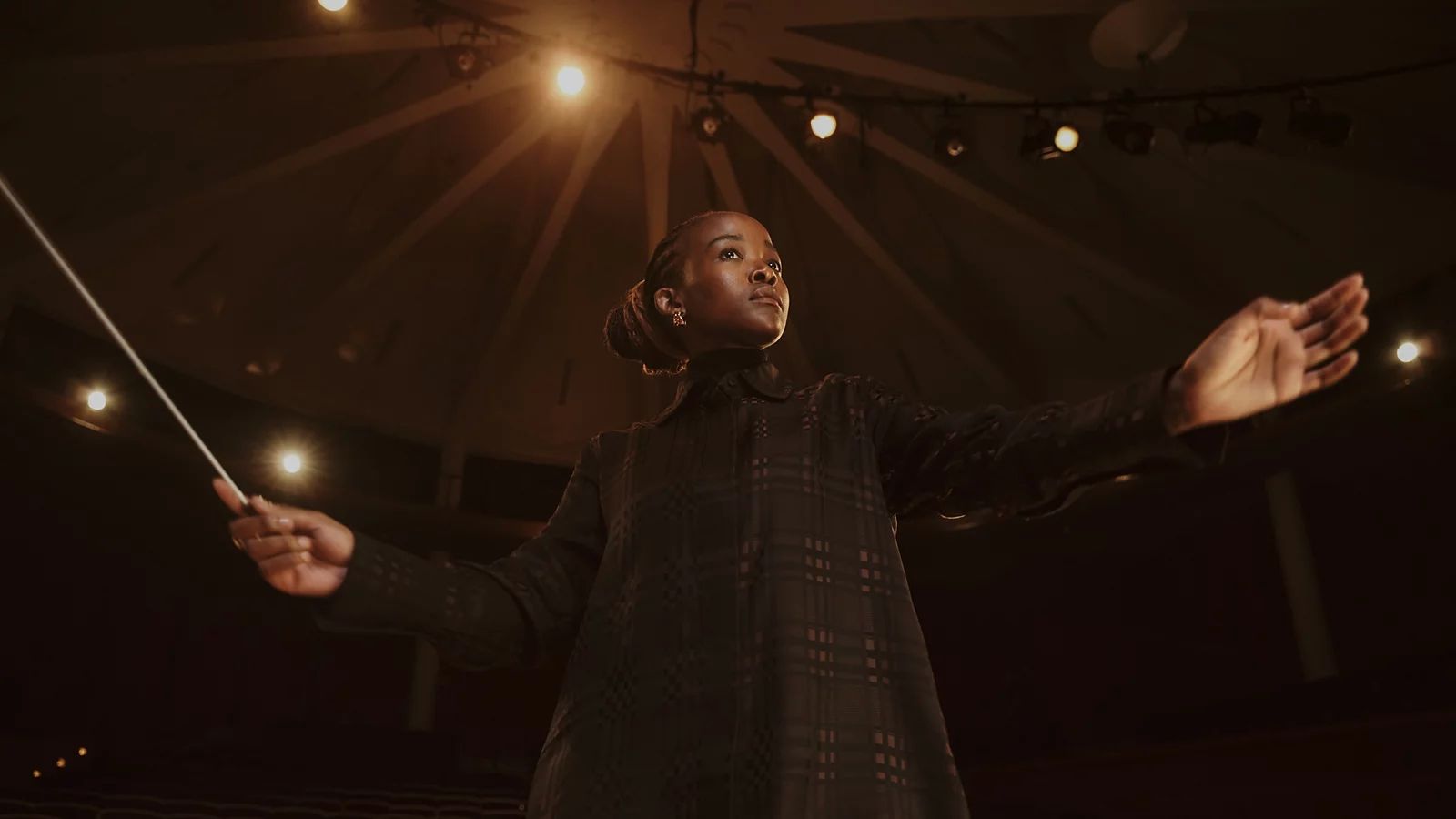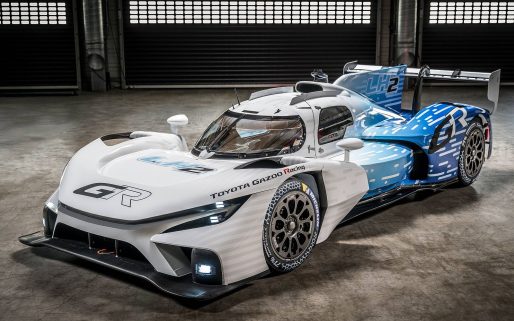Toyota believes that small steps add up to substantial forward leaps. It’s a philosophy that resonates with many individuals across a wide variety of endeavours and occupations, a small selection of whom we have interviewed for this new ‘Beyonders’ series.
Each of the five extraordinary individuals will explain how they have taken steps beyond what anyone thought possible, leading to amazing outcomes that we hope will inspire others to become ‘Beyonders’ too. The series continues with Ofentse Pitse, who went beyond all musical barriers to become South Africa’s first black female orchestral conductor.
Beyonder: interview with Ofentse Pitse
What made you want to become an orchestral conductor?
Ofentse Pitse: My first introduction to music was at the age of 12 in our church. I chose to play the trumpet because I wanted to be among the boys playing that brass instrument. During that time I just got a liking for classical music, and that evolved into my love for an orchestra and choirs. And that got me into wanting to be a conductor. It all happened very organically.
But you’re also an architect. Was that a huge leap into conducting?
OP: Architecture isn’t that far removed from music. Buildings are created with techniques, balance and structure, all of which can be found in classical music. Even my approach to a musical score is similar. I look at where I enter, where I exit. I ask myself where the most habitable space is in the music? Where the light is coming from? Where is the air coming from, the ventilation? I look at the score as though it was a blueprint, a floor plan. Thinking of music as a structure is what makes it really exciting to reinterpret.
What is it like to conduct on the biggest stages of South Africa?
OP: It’s quite interesting because I’m a bit of a rebel in my approach to music. I didn’t want to be like the classical conductors. I wanted to break the mould, and break barriers. A lot of the work I do is in conducting orchestral music but featuring mainstream artists. My first show featured the Afro jazz artist Judith Suprema orchestrated for Tchaikovsky. That was an interesting challenge. And then that evolved into me wanting the next big challenge, such as working out how we mix hip hop, jazz or pop music with an orchestra? That’s an interesting juxtaposition of the classical music world with the art realm. So, it’s always exciting connecting these various things together.
Why have you chosen Sibelius for today?
OP: Firstly because he wrote a hymn that I grew up listening to in church. And then I found out that it’s a song the Finnish people perform or listen to every New Year’s Eve, so it’s quite patriotic. Because of that nature it allows me to put my heart into it, to accentuate my hands, to put feeling into the different movements and themes of the song.
What is your daily routine like as a conductor?
OP: I usually wake up at 5:00am and go for a jog. Then I come back home, listen to some music, and ease into my day. Most of the time I’ll be doing architecture, but recently I’ve been getting into orchestral arrangements and putting different worlds together. I’m very focussed when I get into my work and like to close everything off until I get the task done. I can’t switch my mind off.
What are some of your career highlights so far?
Ofentse Pitse: My career highlights are breaking into unfamiliar territories, like that first collaboration with the Afro jazz artist. I’ve also led an orchestral flash mob-style event with the Champagne house Veuve Clicquot, and featured with an Afro tech house musician dressed in a very gothic outfit. But most recently I completed an event with the industrial group Bidvest, where they asked me to do a show inspired by Beyoncé’s Coachella show but with an African orchestra and an entire African percussion section. That was really exciting.
Have there been any difficult moments in your journey?
OP: Definitely. First of all, you don’t find someone who looks like me in this profession. I’m young, female and black. So in the beginning, when I would reach out to various conductors in South Africa for guidance and mentoring, most of them just said no. But then I found Corbin Goodson, who took me under his wing and taught me everything he knows. It’s still hard for me to do my own grand shows with my entire orchestra and choir because the access to these spaces is still very much male-oriented. So I’ve tried to create my own world and go beyond what people expect. I’ve curated experiences that other young people can be a part of, and those young people are mostly the ones that I use in my orchestra.
What is the most important lesson you have learned so far in your career?
OP: There is. It doesn’t matter how many followers you have on social media or how many people have liked your posts. You simply need to practice and be good at what you do. Applying this takes me away from looking at myself as just a female. I want to be one of the best conductors in the world.
What does success in your field look like to you now?
OP: Success looks like collaboration. I love working with people that you would not normally see with an orchestra. Hence why I jumped on this ‘Beyonders’ campaign. It’s not my norm to be dressed in a tuxedo, in Italian flat front pants and doing an entire overture. This is really about going beyond and speaking to the heart of the audience using orchestral music. That for me is really where I’m looking to head. Oh, and to play at the Sydney Opera House.
Is this where your architecture dreams and conductor dreams come together?
OP: Exactly. Yes. Definitely. So you see how they connect? It’s not too far-fetched!
Do you have any advice for people on how to achieve their best?
OP: That’s an important question. I’d say preparation will always put you in the right places. I drive myself crazy with preparation. Normally a conductor will direct the orchestra by keeping an eye on the score. But when you connect to the heart of the music, you don’t need the score anymore, right? There were parts of today’s piece when I didn’t know where I was, but I could feel the pulse of the orchestra as well as a certain excitement and pulse behind me. So I would say that when you are prepared, you will always be in the right flow.
What’s the next big thing for you?
OP: Sydney Opera House. Carnegie Hall. Then probably doing the ballet or conducting Beyoncé. I don’t know! I’m just really excited about the possibility that lies in front of me because, again, I stay prepared. But I’m definitely looking at putting my own body of work out there and then looking at having some shows, whether it be in theatre spaces or whatever. But I like to collaborate with artists.
Finally, what things count for you?
Ofentse Pitse: Every vision counts, every rehearsal counts, every applause counts, every intention counts, every member counts, every score counts.
Read more in the ‘Beyonders’ series:
Billy Monger, racing driver
Samir Ait Said, gymnast
Ken Billes, car designer
Kazuki Nakajima, racing driver





hello and good morning to whomever it may concern, there is a television advertisement currently on terrestrial uk television on the toyota experience, i am endeavouring to find it on the internet to watch as i think it is one of the most beautifully made, can you help, please
Hi Rommell, thanks for getting in touch.
We are very pleased to hear you enjoyed watching our Let’s Go Beyond TV ad!
You can view this video again, along with information on the campaign here:
https://www.toyota.co.uk/discover-toyota/lets-go-beyond
Alternatively, you can find the video on YouTube here:
https://www.youtube.com/watch?v=CODusX1ohuw&t=2s
Thanks.